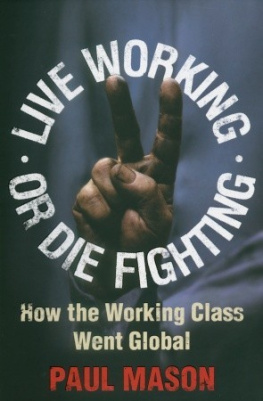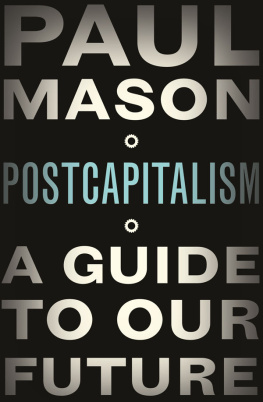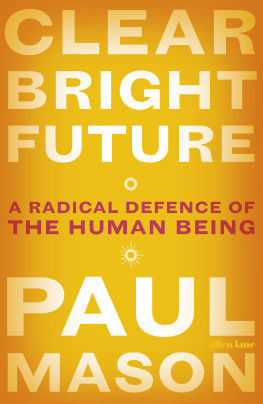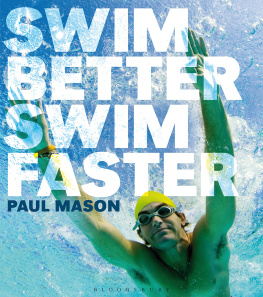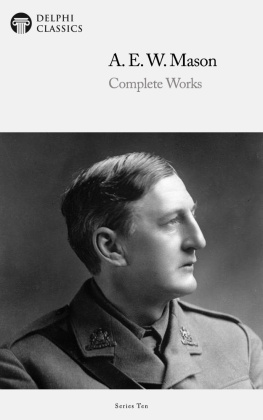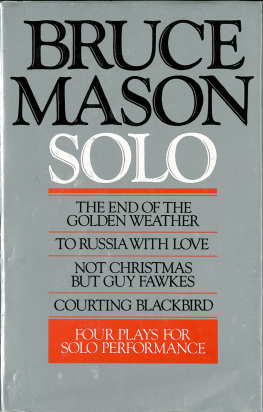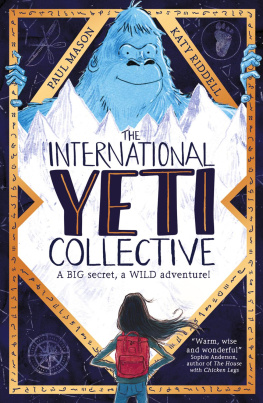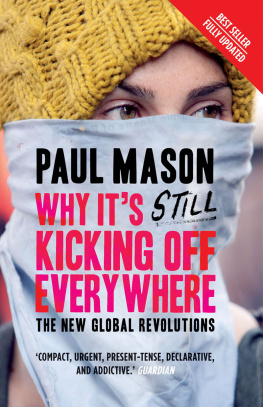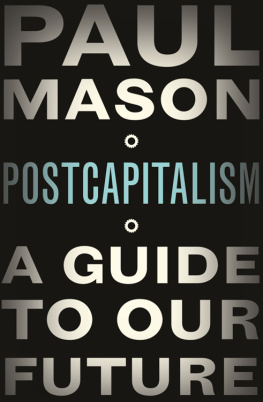Paul Mason - Live Working Or Die Fighting
Here you can read online Paul Mason - Live Working Or Die Fighting full text of the book (entire story) in english for free. Download pdf and epub, get meaning, cover and reviews about this ebook. publisher: Random House, genre: Detective and thriller. Description of the work, (preface) as well as reviews are available. Best literature library LitArk.com created for fans of good reading and offers a wide selection of genres:
Romance novel
Science fiction
Adventure
Detective
Science
History
Home and family
Prose
Art
Politics
Computer
Non-fiction
Religion
Business
Children
Humor
Choose a favorite category and find really read worthwhile books. Enjoy immersion in the world of imagination, feel the emotions of the characters or learn something new for yourself, make an fascinating discovery.
- Book:Live Working Or Die Fighting
- Author:
- Publisher:Random House
- Genre:
- Rating:3 / 5
- Favourites:Add to favourites
- Your mark:
- 60
- 1
- 2
- 3
- 4
- 5
Live Working Or Die Fighting: summary, description and annotation
We offer to read an annotation, description, summary or preface (depends on what the author of the book "Live Working Or Die Fighting" wrote himself). If you haven't found the necessary information about the book — write in the comments, we will try to find it.
Live Working Or Die Fighting — read online for free the complete book (whole text) full work
Below is the text of the book, divided by pages. System saving the place of the last page read, allows you to conveniently read the book "Live Working Or Die Fighting" online for free, without having to search again every time where you left off. Put a bookmark, and you can go to the page where you finished reading at any time.
Font size:
Interval:
Bookmark:

Paul Mason was born in 1960 in Leigh, Greater Manchester. He is BBC Newsnights business and industry correspondent. He won the 2003 Wincott Award for business journalism and was named Workworld Broadcast Journalist of the year in 2004. He lives in London.

A man is scrambling in the dark across the pits and trenches of a massive building site. He is a foreman on the Liverpool docks, a man reputed for toughness and clean living. It is a warm night in the summer of 1904. The next day, on this spot the citys business elite will watch the King lay the foundation stone of the new Anglican cathedral; history will record the pomp of the ceremony in deferential detail. But it will not record what happens tonight.
Guided by a worker from the site, the docker digs a hole and buries a tin time capsule just below where the foundation stone will be laid. It contains articles from obscure labour newspapers and a message written in the flowery script and language of the self-taught working man. It says:
To the Finders, Hail! We the wage slaves employed on the erection of this cathedral, to be dedicated to the worship of the unemployed Jewish carpenter, hail ye! Within a stones throw from here, human beings are housed in slums not fit for swine. This message, written on trust-produced paper with trust-produced ink, is to tell ye how we today are at the mercy of trusts
Trusts were then what global corporations are today: powerful companies with a finger in every pie, held responsible for all the poverty in the world by some, all the progress in the world by others. Slums we still have one billion people live in them and though they are more than a stones throw from the rich cities of Europe and America, thanks to blogs, television and mobile phones the contrast between squalor and wealth is just as obvious to us as it was then.
Then, as now, there was an anti-corporate movement, and it was global. Its agitators spread their message on the street corners of slum districts, in the steerage cabins of migrant ships. It boycotted unethical goods, got its head broken on demonstrations and lived an alternative lifestyle that shocked mainstream society. This was the labour movement in the years before fists replaced flowers as its main symbols. Its true history has been buried as deep as that Liverpool dockers time capsule; its narratives, heroes and epics have been lost or, worse, simplified beyond meaning.
That history needs to be rediscovered because two sets of people stand in dire need of knowing more about it: first, the activists who have flooded the streets in Seattle, Genoa and beyond to protest against globalisation; second, the workers in the new factories, mines and waterfronts created by globalisation in the developing world, whose attempts to build a labour movement are at an early stage. They need to know what happened to the original labour movement during its long upward sweep not in order to relive it or piously to learn lessons from it. They need to know, quite simply, that what they are doing has been done before, where it can lead and what patterns of revolt, reaction and reform look like when you view them over decades. Above all they need to know that the movement was once a vital force: a counterculture in which people lived their lives and the main source of education for men and women condemned to live short, bleak lives and dream of impossible futures.
I have written this book to tell that story. There is no attempt to be comprehensive; I have just picked out some of the major events that happened during the great advance of the first hundred years, followed by the crisis and catastrophe of the inter-war period.
Because the first 150 years of industrial capitalism took place in countries that were mainly white and produced trade unions that were largely male, this is a story mainly about white, male workers in Europe, America and the Far East. Because it relies on memoirs, oral histories and the work of academics who themselves rely on these sources, I have concentrated on countries where such sources are accessible and trustworthy. I have not given any more than a rough sketch of the situation in mainstream politics in each chapter; if you want to know more about Louis-Napoleon, Franklin Delano Roosevelt or Giovanni Giolitti, just type them into Google and press Enter.
For a long time a book like this seemed to me unnecessary. When there were strong labour movements in Europe, America and the Pacific based in stable communities with an oral tradition, everybody knew the basic history. The workers I grew up with in an English coal and cotton town seemed to have been as George Orwell wrote born knowing what I had learned, out of books and slowly. Nobody needed a book that explained the basics then. And in any case, all the best stories had been told, I thought.
I was wrong. Leigh, the town where I grew up, was not so different in the 1960s from how it was when my grandfather went down the pit in 1913: it was a world of white manual workers, devout Sunday marchers for Catholicism and Methodism, brass bands, rugby and the annual Miners Gala. It is totally different now: twenty years of globalisation have shorn away most of what was permanent and certain. The miners union was destroyed, manufacturing has moved to China, and if you look for the union activists now you will find them mainly in education and local government. The labour market in which workers from Leigh compete starts at their doorsteps and ends at a bus station in Bangalore or a slum in Shenzhen.
A culture that took 200 years to build was torn apart in twenty. There is no point mourning that but it means the new working class of what campaigners call the global south is being born unconscious of the stories of the past. And the anti-globalisation movement is not in any shape to supply the narratives its oldest legend tells of a day in Seattle in November 1999.
Today, in place of a static local workforce working in the factories and drinking in the pubs their grandfathers worked and drank in, a truly global working class is being created. This is happening for a number of reasons. First, because since the collapse of communism the whole worlds workforce has shared the experience of working in a market economy: there is no longer an iron curtain dividing workers into two completely different ways of living. Second, practice in the workplace is becoming standardised across the globe: the quality circle in a UK car factory discusses the same things as one in China; the work involved in making a Big Mac is the same in Sheffield and Shanghai, even if the wages and human rights are different. Third, with the emergence of global union federations there is the beginning of cross-border collective bargaining. Finally, by pitting the low-waged workforce of the developing world against the high-waged workers of Europe, America and Japan, globalisation has forced labour organisations to think internationally, even if they are slow to act internationally.
Objectively, the global working class exists. Subjectively in the minds of the people on the factory floor things are more complicated. In the global south, millions of peasants and shanty dwellers are being sucked into the exhilarating and brutal world of wages, overtime, company dormitories and consumer capitalism. They are going through what the first generation of factory workers went through, but in an economy where information flows like quicksilver and consumer culture is global.
Next pageFont size:
Interval:
Bookmark:
Similar books «Live Working Or Die Fighting»
Look at similar books to Live Working Or Die Fighting. We have selected literature similar in name and meaning in the hope of providing readers with more options to find new, interesting, not yet read works.
Discussion, reviews of the book Live Working Or Die Fighting and just readers' own opinions. Leave your comments, write what you think about the work, its meaning or the main characters. Specify what exactly you liked and what you didn't like, and why you think so.

